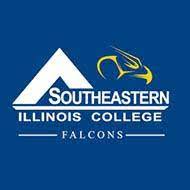
End of the term enrollment data shows Southeastern Illinois College is nearing pre-COVID enrollments after a successful fall that ended with nearly 600 more students than compared to Fall 2020.
“This is great news for SIC and our region,” said retiring president, Dr. Jonah Rice. “I could not be prouder of our staff and faculty for helping turn around the dips in enrollment during and following the pandemic. Our recruiting efforts, new offerings, and student support services have all paid huge dividends.”
At the end of Fall 2020, SIC had just under 1,400 students and saw steady increases after the pandemic. End of term Fall 2023 headcount stands at just under 2,000 students.
“End of the term enrollment is really what matters most in enrollment reports,” said President-elect Dr. Karen Weiss, the current Vice-President at SIC.
“Beginning numbers are in flux at any given point in time, but the end of the term numbers are solid. They don’t move. That’s what we send to the state for reimbursement purposes.”
Officials say that strategic enrollment management has led to this increase.
Rice attributed the enrollment success to a variety of strategic priorities in every functional area of the college.
As for academics, new programs such as the Associate of Fine Arts, Industrial Maintenance, Outfitter Wildlife Management, EMT, a rapidly growing dual credit Afternoon Academy, and more.
“We work closely with regional industry needs, such as with our Industrial Maintenance program at our new Career and Training Center at our White County campus,” said Weiss.
Student services have expanded student life and cocurricular offerings, such as archery teams, dance, and debate.
“Over the last few years, we’ve expanded opportunities for students and have invested in facilities, such as being the only community college in the nation to have an indoor archery range. We’ve also renovated a dance studio and focused more on debate with our championship speech team,” said Rice.
As for recruiting, SIC has been deliberative and focused in recruiting strategies, ranging from the implementation of early points of contact with younger audiences – exposing them to all that SIC has to offer – as well as dual credit, which increases the chances of post-secondary education.
“It’s exciting to see us moving in this direction,” said Weiss. “We’re excited by the future.”














